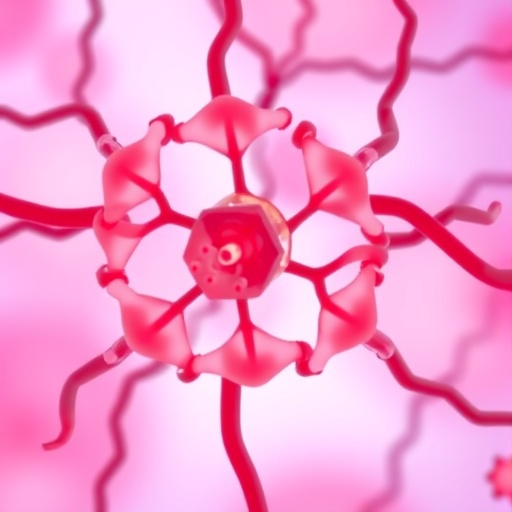With the goal of making it easier for surgeons to detect malignant tissue during surgery and hopefully reduce the rate of cancer recurrence, scientists have invented a new imaging system that causes tumors to “light up” when a hand-held laser is directed at them.
“A surgeon’s goal during cancer surgery is to remove the tumor, as well as enough surrounding tissue to ensure that malignant cells are not left behind,” said Aaron Mohs, Ph.D., assistant professor of regenerative medicine at Wake Forest Baptist Medical Center and a co-inventor of the system. “But how do they know when they’ve removed enough tissue? Our goal is to provide better real-time information to guide the surgery.”
Published online ahead of print in IEEE Transactions on Biomedical Engineering (TBME), Mohs and co-authors report on their prototype system that combines a fluorescent dye that localizes in tumors with a real-time imaging system that allows the surgeon to simply view a screen to distinguish between normal tissue and the “lighted” malignant tissue.
In both mice and companion dogs with tumors, the scientists found that the fluorescent dye accumulated at higher levels in tumors than in the surrounding tissue and the system was able to detect a distinct boundary between normal and tumor tissue. Canine tumors are known to be similar to human tumors in architecture and canines get the same types of tumors as humans.
The scientists are working to further develop the system so it can be evaluated in human patients.
Current technology allows cancer surgeons to scan tumors prior to surgery with magnetic resonance imaging and other systems. However, to scan the tumor during surgery involves moving the patient from the operating table and into the machinery –which prolongs the surgery.
“Being able to quickly scan a tumor during surgery to visualize tumor tissue from non-tumor tissue is an unmet clinical need,” said Mohs. “Pathology techniques that examine tumor tissue during surgery can take up to 20 minutes and they focus on the tissue removed during surgery, not the tissue that remains in the body.”
In TBME, the authors noted that the ideal system would find tumor boundaries with high sensitivity, have minimal impact on operative time and surgical technique, present findings in an intuitive manner and avoid the use of ionizing radiation or a specialized imaging environment, such as MRI machines.
The system, invented by Mohs, Michael C. Mancini at Spectropath Inc., and Shuming Nie with Emory University and Georgia Institute of Technology, combines two types of imaging. A surgeon-controlled laser can be directed at any area of interest. In addition, an imaging system with three cameras sits above the surgical field. The images recorded by both systems are processed to display a composite image.
Using this system, a surgeon would scan the tumor prior to surgery to determine its boundaries. The tumor would then be surgically removed and the area would be re-scanned to assess for any remaining malignant tissue. If diseased tissue is found, it would be removed, and the process would be repeated until diseased tissue could no longer be detected.
In the prototype system reported in TBME, the scientists used indocyanine green dye as the source of fluorescence. They noted that future studies will focus on higher performance fluorescent dyes and nanoparticles that can be targeted to specific tumors.
Recently, Mohs was awarded a $1.37 million research grant from the National Institute of Biomedical Imaging and Bioengineering for a project to optimize the system and to test it in rodents.
Under the four-year project, Mohs’ team will develop nanoparticles based on hyaluronic acid, a substance naturally present in the human body. These nanoparticles will have the ability to entrap near infrared fluorescent dyes. The research will investigate invasive ductal carcinoma, the most common type of breast cancer.
Under the project, the researchers will focus on optimizing the loading of the dye, determining how fluorescence can be activated and performing studies in rodents to evaluate safety and whether disease recurrence is reduced.
Story Source:
The above story is based on materials provided by ake Forest Baptist Medical Center.





